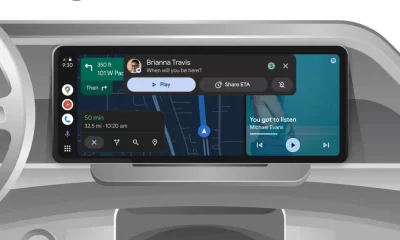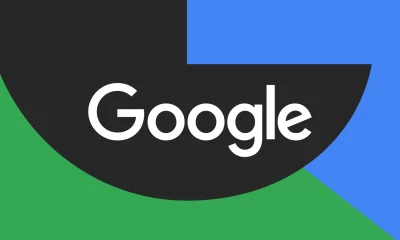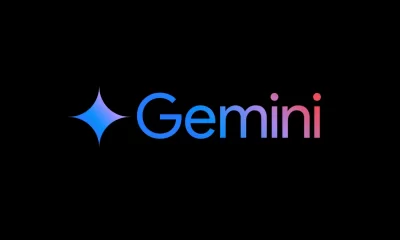ChromeOS 130 brings enhanced recorder, studio-style mic, reading aid, PiP docking, and Google Discover redesign

ChromeOS 130 is now available, delivering a range of new features and enhancements, especially for Chromebook Plus devices. This release introduces several improvements across productivity, audio, display settings, and privacy, making the user experience smoother and more intuitive. Here’s a closer look at what’s new in ChromeOS 130:
Enhanced Recorder App with Real-Time Transcription
All Chromebooks now include a Recorder app that offers on-device transcription. This real-time transcription activates after downloading a 100MB model. The app is designed with a dual-column Material You interface, allowing users to capture audio from their devices seamlessly. For Chromebook Plus users, a more advanced 2GB model provides additional features, such as a three-point summary and title suggestions for recordings, making organization and review easier.
Studio-Style Mic with Enhanced AI Noise Control
ChromeOS 130 adds a new “Studio-style mic” feature for Chromebook Plus devices, bringing professional-level audio quality to online calls. Using advanced AI, this microphone setting simulates the quality of high-end microphones by enhancing noise cancellation and de-reverberation effects. Users who have already enabled noise cancellation will automatically receive these new features by default, but they can choose to switch back to standard noise cancellation in Settings > Device > Audio if desired.
The Studio-style mic feature is available through video call controls in the Shelf. Additionally, new “Appearance effects” adjust lighting and brightness, enhancing overall video call quality.
Help Me Read: Summarization and Question Tool
ChromeOS 130 introduces “Help me read,” an accessibility feature allowing users to right-click on websites and PDFs for quick summaries or to ask questions about the content. This tool can help simplify complex material, providing a brief overview or more details on the topics within.
Docked Picture-in-Picture (PiP) for Flexible Viewing
The Picture-in-Picture (PiP) feature has received an upgrade, enabling users to dock PiP windows on the side of the screen, which only shows a slim portion when not in use. A double-tap allows for easy expansion and minimization, making PiP more versatile than before.
Multi-Calendar Support in Google Calendar
ChromeOS 130 also introduces multi-calendar support, allowing users to view events from several calendars in Google Calendar. This integration helps users keep all their commitments in view without switching between accounts or tabs.
New Keyboard and Display Controls
In Settings > Device > Keyboard, users now have a slider to adjust the backlight brightness and an option to enable or disable the ambient light sensor, offering more control over display preferences. Likewise, similar settings are available under Display to control screen brightness, enhancing accessibility and personalization.
Improved File Suggestions and Access in Tote
ChromeOS 130 updates Tote with enhanced suggestions, making it easier to access files stored locally and on Google Drive. This new feature recommends important files and allows users to pin them for offline access. Additionally, starred Drive files can now be accessed directly from the Shelf, streamlining file management.
Enhanced Privacy Controls for Microphone and Camera Access
ChromeOS 130 includes improved privacy settings, making it easier for users to control OS-level privacy options for camera and microphone access. This update helps users understand and manage permissions across ChromeOS and the Chrome browser, ensuring privacy remains front and center.
Google Discover Tests Material 3 Redesign for a Fresh Look
Google is currently testing a Material 3 redesign of the Google Discover feed, visible on the latest Google app beta (version 15.43). This new design introduces cards that contain individual content items and make images taller, giving the feed a less cluttered appearance. With a single overflow menu per card, users can access “Save” and “Share” options more conveniently. Additionally, certain cards show the topic at the top with a “+” button for easy following, refining the experience to feel more organized.
With this update, ChromeOS 130 reinforces Chromebook’s utility, accessibility, and user control across work and leisure settings, making it a valuable release for all ChromeOS users.
Google Meet gets a fresh new look with Material 3 design
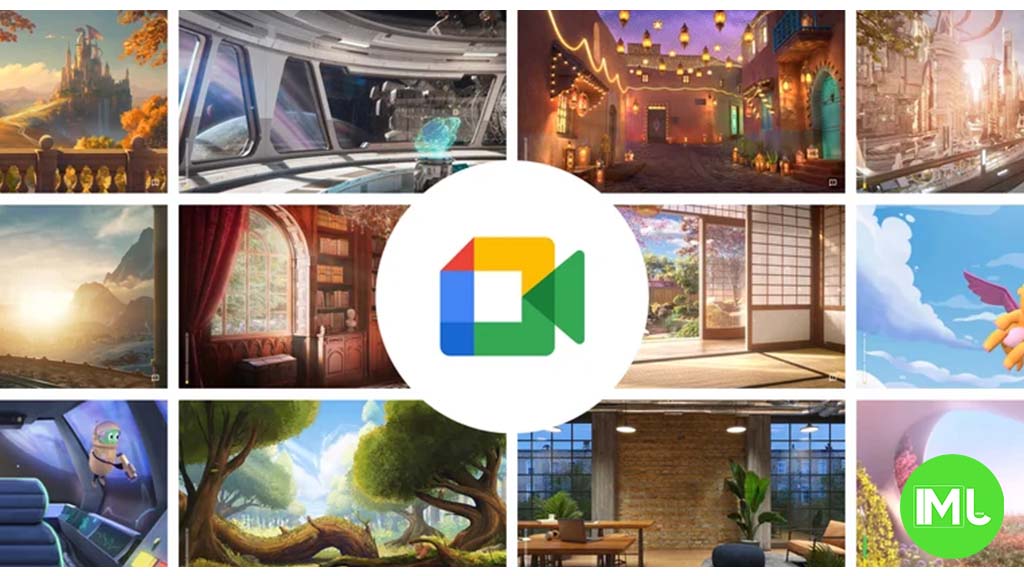
Google Meet is getting a big update to its look, thanks to the new Material 3 design. This change brings a cleaner and more modern style to the video calling app, making it easier and more enjoyable to use.
With Material 3, Google Meet now has rounder buttons, softer colors, and better spacing between elements. The main controls, like the microphone, camera, and end call buttons, are now larger and easier to tap. The icons and text are also clearer, which helps users find what they need quickly during a call.
Another improvement is the new “expressive” color system. This feature lets the app’s colors match your device’s wallpaper or theme, giving each user a unique and personalized experience. The changes also make Google Meet more accessible, as the new design is easier to read and use for everyone, including people with vision difficulties.
These updates are rolling out to both web and mobile versions of Google Meet. Google says the new look will help people feel more comfortable and focused during their meetings. Overall, the Material 3 update makes Google Meet not only look better but also work better for all its users.
Android
Easy ways to change Android Auto’s look with light and dark themes
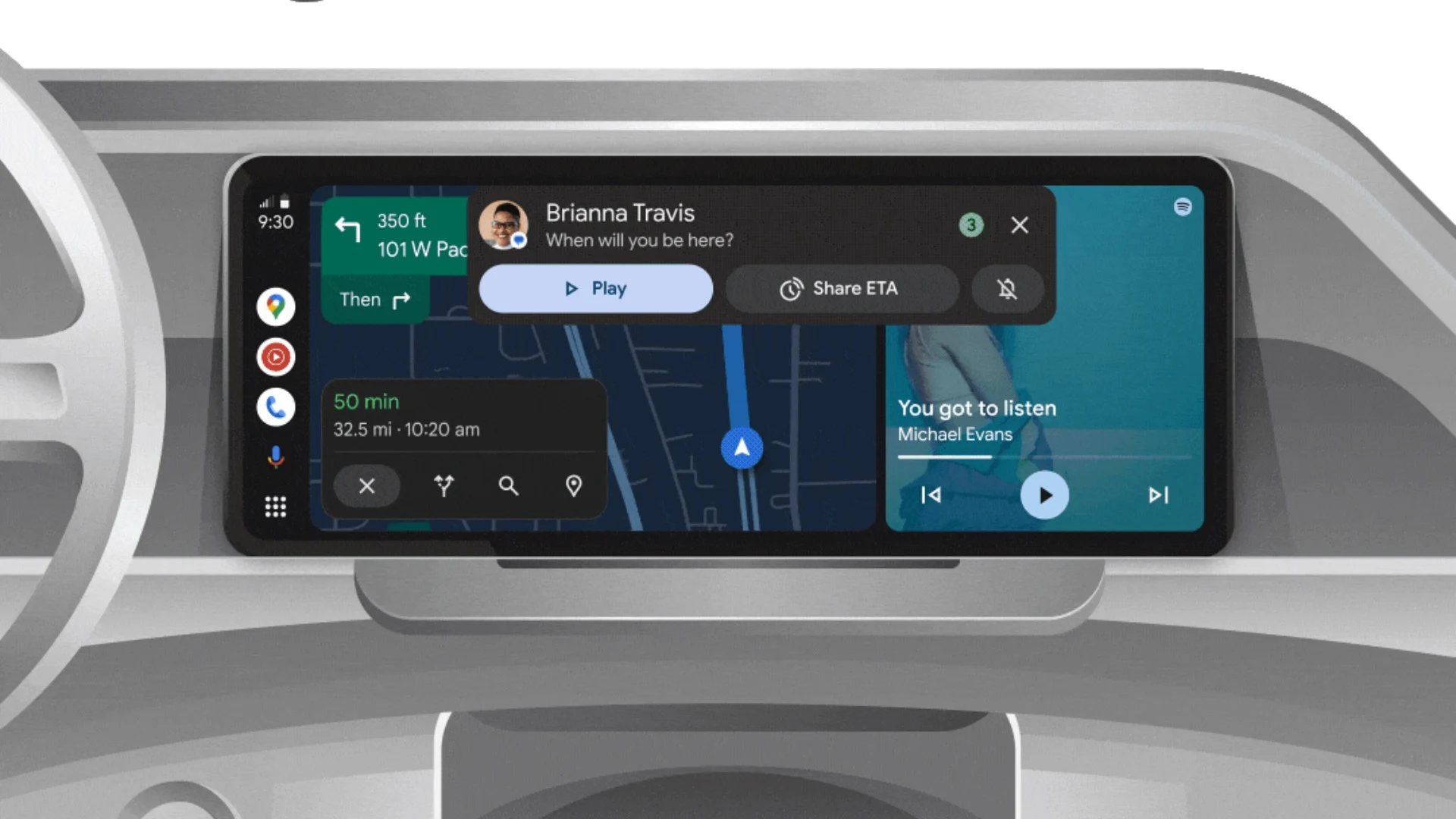
Android Auto is a helpful tool that lets you use your phone’s apps safely while driving. It connects your phone to your car’s screen, making it easier to use maps, music, and calls. One of the features many people like is the ability to change how Android Auto looks by switching between light and dark themes.
How to switch between light and dark themes
Android Auto offers two main themes: light and dark. The light theme uses brighter colors, which can make the screen easier to see during the day. The dark theme uses darker colors, which can be more comfortable for your eyes at night or in low light.
To change the theme, follow these steps:
- Open the Android Auto app on your phone.
- Go to the settings menu.
- Find the “Theme” option.
- Choose between “Light,” “Dark,” or “Set by car” (this lets your car decide the theme based on the time of day or your car’s settings).
Why themes matter
Using the right theme can make driving safer and more comfortable. The light theme is good for bright days, while the dark theme helps reduce glare at night. Having these options means you can pick what works best for you, making Android Auto easier to use in any condition.
In short, Android Auto’s theme options are simple to use and help you drive more safely by making the screen easy to see, no matter the time of day.
Google Drive and Files by Google get fresh updates for easier use

Google is rolling out some helpful updates to two of its popular apps: Google Drive and Files by Google. These changes are designed to make managing your files and watching videos much smoother.
First, Google Drive is getting a new video player. Now, when you upload a video to Drive and open it, you’ll notice a fresh look that matches Google’s latest design style. The controls, like play and pause, are easier to use and look cleaner. This update makes it simpler to watch videos directly in Drive without needing to download them first.
Meanwhile, the Files by Google app is also getting a makeover. The app is adopting Google’s Material 3 design, which means it looks brighter and more modern. The buttons and menus are easier to see and use, making it simpler to find, move, and organize your files. There are also new color options and improved icons, so everything feels more user-friendly.
Both updates show Google’s commitment to making its apps more helpful and enjoyable to use. Whether you’re watching videos in Drive or sorting files on your phone, these changes aim to save you time and make things less complicated. If you use these apps, keep an eye out for these new features—they should arrive soon!
-

 Apps1 year ago
Apps1 year agoGboard Proofread feature will support selected text
-

 News1 year ago
News1 year agoSamsung USA crafting One UI 6.1.1
-

 Apps1 year ago
Apps1 year agoGoogle Contacts app testing new Besties Widget
-
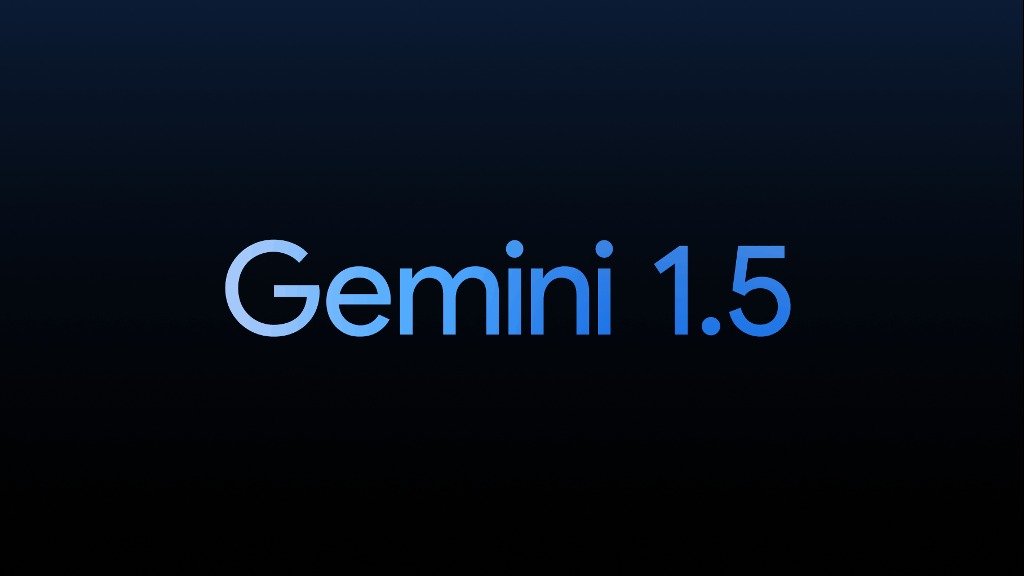
 AI12 months ago
AI12 months agoGoogle Pixel 9 Pro may come with a complimentary one-year Gemini Advanced subscription
-
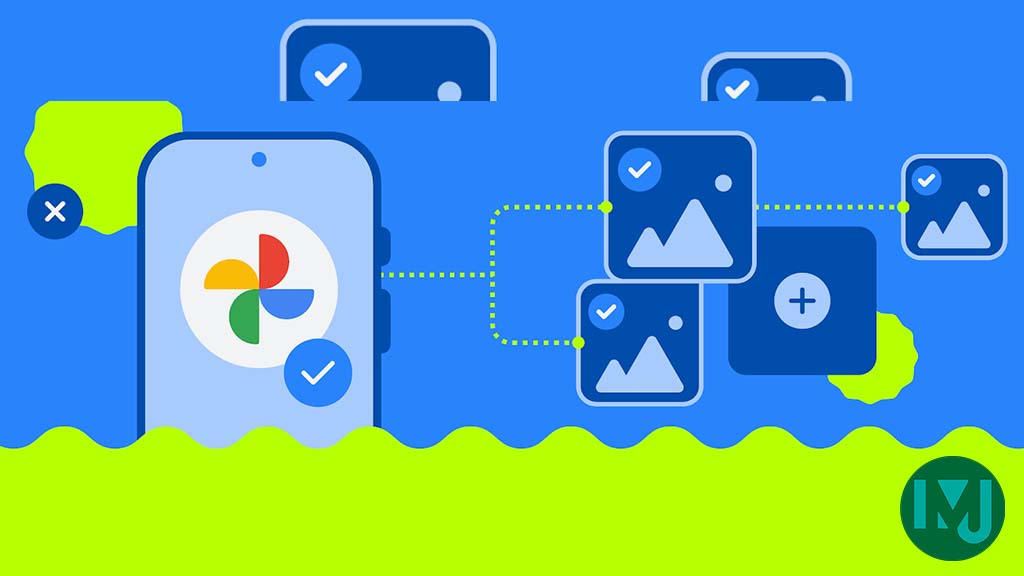
 Apps12 months ago
Apps12 months agoGoogle working on a new video editing feature for its Photo app
-

 News1 year ago
News1 year agoBreaking: Samsung Galaxy S22 may get Galaxy AI features
-
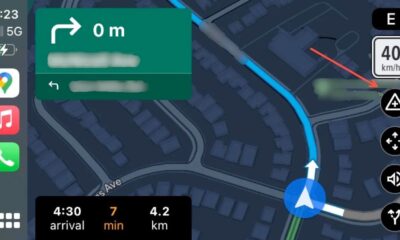
 Apps12 months ago
Apps12 months agoGoogle Maps lets you report traffic jams and accidents on Apple CarPlay, but not on Android Auto
-

 Apps1 year ago
Apps1 year agoGoogle Messages app will transform MMS chats into RCS



